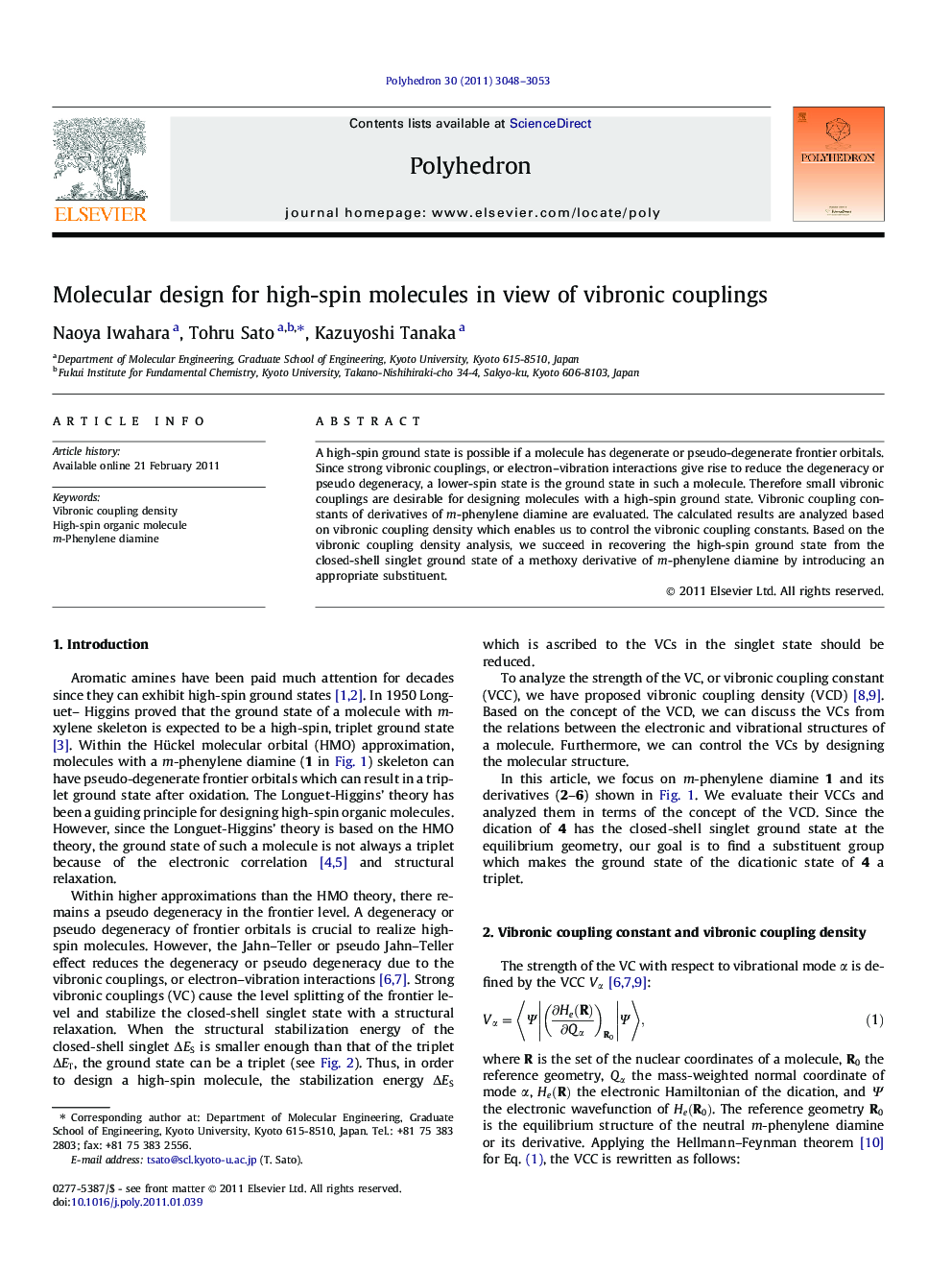| کد مقاله | کد نشریه | سال انتشار | مقاله انگلیسی | نسخه تمام متن |
|---|---|---|---|---|
| 1335977 | 1500291 | 2011 | 6 صفحه PDF | دانلود رایگان |

A high-spin ground state is possible if a molecule has degenerate or pseudo-degenerate frontier orbitals. Since strong vibronic couplings, or electron–vibration interactions give rise to reduce the degeneracy or pseudo degeneracy, a lower-spin state is the ground state in such a molecule. Therefore small vibronic couplings are desirable for designing molecules with a high-spin ground state. Vibronic coupling constants of derivatives of m-phenylene diamine are evaluated. The calculated results are analyzed based on vibronic coupling density which enables us to control the vibronic coupling constants. Based on the vibronic coupling density analysis, we succeed in recovering the high-spin ground state from the closed-shell singlet ground state of a methoxy derivative of m-phenylene diamine by introducing an appropriate substituent.
To design high-spin organic molecule, vibronic couplings (VC) in derivatives of m-phenylene diamine are investigated. Introduction of an appropriate substituent can make the ground state a triplet from the singlet state by controlling the VCs based on the concept of vibronic coupling density.Figure optionsDownload as PowerPoint slideHighlights
► Vibronic couplings in m-phenylene diamines are studied.
► Due to the strong coupling, low-spin state is stabilized.
► To design a high-spin molecule, the vibronic coupling must be weak.
► The vibronic coupling is controlled based on the vibronic coupling density analysis.
► Based on the method, a high-spin state is recovered from the low-spin state.
Journal: Polyhedron - Volume 30, Issue 18, 28 November 2011, Pages 3048–3053